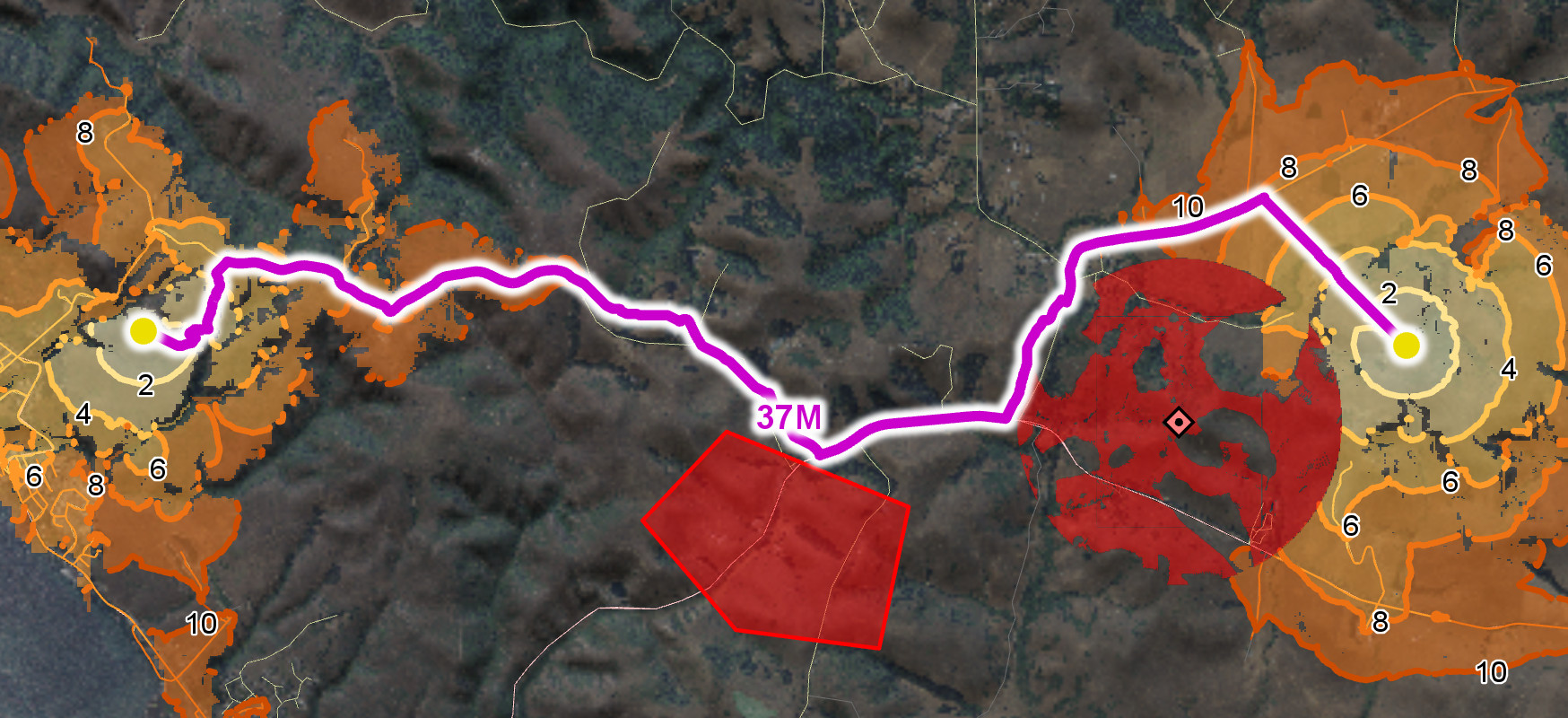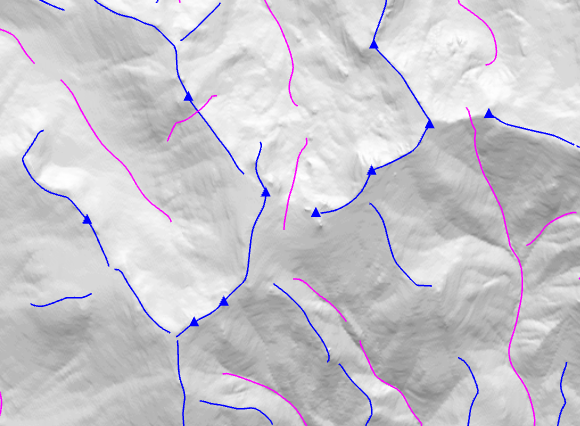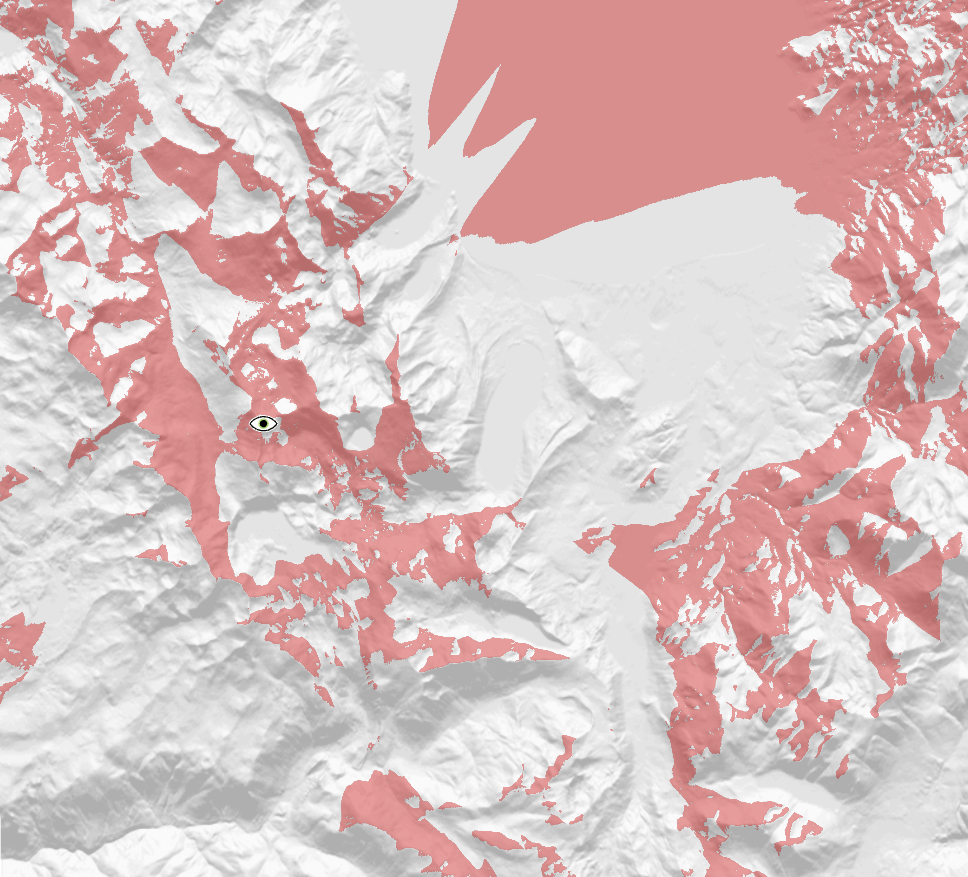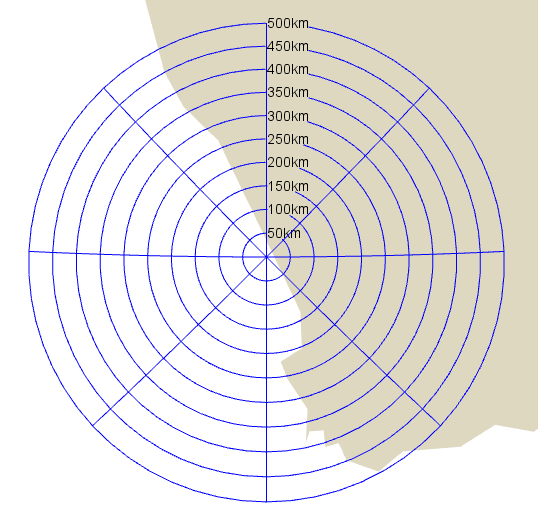Carmenta Engine 5.13
This version features Next Generation Terrain Routing, Automatic Detection of Ridges and Valleys, New Mouse and Touch Interactions for Creating and Editing Circular Features, Performance Improvements and much more.
Next Generation Terrain Routing
The Carmenta Engine off road routing functionality has received a major overhaul in this release. Not only have we been able to make the routing calculation significantly faster – we’ve also added several new features.
A major new addition is the possibility to calculate omnidirectional travel times from a specified starting point, resulting in so-called isochrones.

When the vehicle is using the road network, restrictions on vehicle width, height, length and weight can now be taken into account. The routing algorithm has additionally been extended to be able to handle areas that should be avoided but which are not completely forbidden.
It is now also possible to produce a more detailed representation of the calculated route suitable for generating textual driving instructions.
Automatic Detection of Ridges and Valleys
The new RidgeOperator can detect and generate features for ridges, valleys, peaks and basins from elevation data in any source and resolution.

New Mouse and Touch Interactions for Creating and Editing Circular Features
The built-in tools for mouse and touch interaction have been extended with support for creating and editing circles, rings, ellipses, circle segments and related features.
It is easy for the application to control which kinds of objects can be created and which types of interactions should be allowed.

Performance Improvements
The new release includes a number of different performance improvements applicable both to visualising and analysing data.
The viewshed algorithm used in LineOfSightOperator has been extensively parallelized and is now several times faster.

The DirectX renderer that is used in .NET WPF applications has significantly improved performance when rendering large amounts of similarly styled information such as complex road networks.
The TileLayer component now uses an even more efficient approach to read and render
its map tiles in parallel.
Other Notable Improvements
Support for Non-WMTS Tile Servers
The OgcWmtsLayer component can now be used to load tiles from tile-based map servers that do not implement the OGC® WMTS standard, such as OpenStreetMap and Bing Maps.
Automatic Range Circle Generation
The new RangeCircleOperator makes it easy to generate and visualize multiple concentric circles, optionally combined with radial lines at defined directions.
The resulting “bullseyes” can either be centred on objects in the map or positioned relative to the screen.

Metadata according to GéoBase Défense and TopoBase Défense from IGN
Carmenta Engine can now read additional metadata according to the GéoBase Défense and TopoBase Défense standards specified by the French Institut Géographique National (IGN).
The metadata is easily accessible to the application through the existing DataSetInfo API.
New programming sample for NATO STANAG 4609 Full-Motion Video
The Projected Video application sample now includes an implementation of relevant parts of the MISB ST 0601.8 standard that is used in the STANAG 4609 standard for UAV digital motion imagery.
